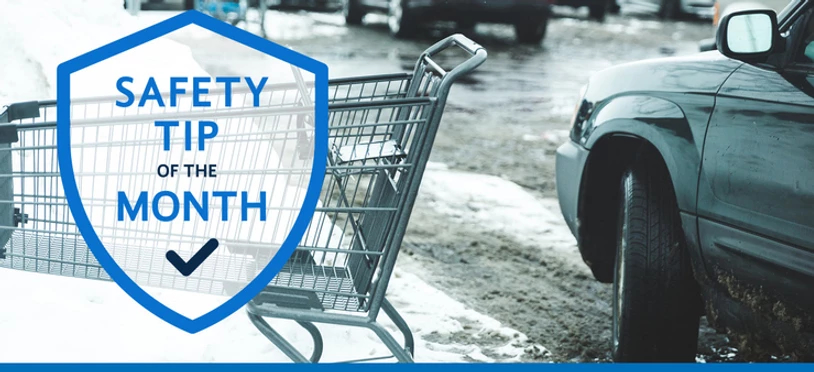Wintertime often presents hazardous weather conditions around the country. When weather conditions are bad, accidents such as slips, trips and falls are a common occurrence. Subsequently, an increase in winter weather corresponds with an increase in claims. It’s important to learn how to contain these risks in order to avoid extra claims this winter.
Occupational Winter Hazards
Winter weather is a dangerous occurrence for individuals across the country. For grocers, ice and snow may lead to risks in both the store and the parking lot. According to the Occupational Safety and Health Administration (OSHA), employers must work to control these hazards in order to prevent complications such as injuries, illnesses or fatalities in the workplace. Slips, trips and falls make up the largest part of workplace accidents while also accounting for 15% of accidental fatalities, second only to motor vehicle accidents.
Delivery Exposure
Since the inception of the pandemic almost two years ago, delivery exposure has become a more prominent hazard for grocers. Particularly during the winter, increased over the road exposure has become a focal point of most grocers in an effort to promote social distancing measures. Hazardous road conditions and powerful winter storms have created issues for delivery drivers. Some common over the road auto exposures in the winter:
- Icy roads
- Limited visibility
- Cold exposure
- Mechanical issues
With a 20% increase in food delivery revenue in 2020, these businesses find themselves on the front lines of over the road exposures in hazardous winter conditions.
Slip, Trip and Fall Prevention Tips
Incidents involving employees may lead to workers’ compensation claims, while incidents involving customers may lead to lawsuits. The number one priority should be safety.
- Keep parking lots and walkways clear of snow and ice.
- Use salt or sand to give lots and walkways more traction for workers and customers.
- Provide ample lighting in parking lots.
- Provide mats and use wet floor signs as needed at entrances.
In addition, employers can encourage slip, trip and fall prevention tips for employees in order to avoid injury. Some of these techniques include:
- Walk slowly and deliberately while avoiding black ice and other slippery surfaces.
- Ohio State University recommends “walking like a penguin” with feet pointed out slightly, knees bent, feet flat, arms extended out for balance. Take short steps or shuffle.
- Do not carry more than is safe while navigating ice and snow.
- Focus on where you’re walking and avoid distractions.
- Wear appropriate, anti-slip footwear to work. Workers in icy parking lots may need ice cleats.
- Clean your footwear once you are indoors. This will help avoid caked snow and ice on shoe soles.
- Conduct regular inspections of the premises and mop up any puddles.
- Have an efficient and effective system for reporting injuries or injury hazards.
By stressing precaution and greater vigilance in the workplace, slip, trip and fall prevention is more effective and keeps both yourself and your employees safe during the winter season.
For more information, see the following resources:
Take Action Against Winter Hazards
Winter can be a hazardous time for workplaces across the country. By practicing effective slip, trip and fall prevention techniques, you can protect your employees and your customers from injury. Download our Wintertime Safety Tips Sheet for more information.
Need a second opinion on your grocery store insurance? We can help!https://www.riskpointins.com/wp-content/uploads/2022/06/WINTERTIME.pdf
Contact Joe or Melissa today.
| Joe Scarpello | Melissa Johnson |
| 253.444.5584 | 253.444.5654 |


